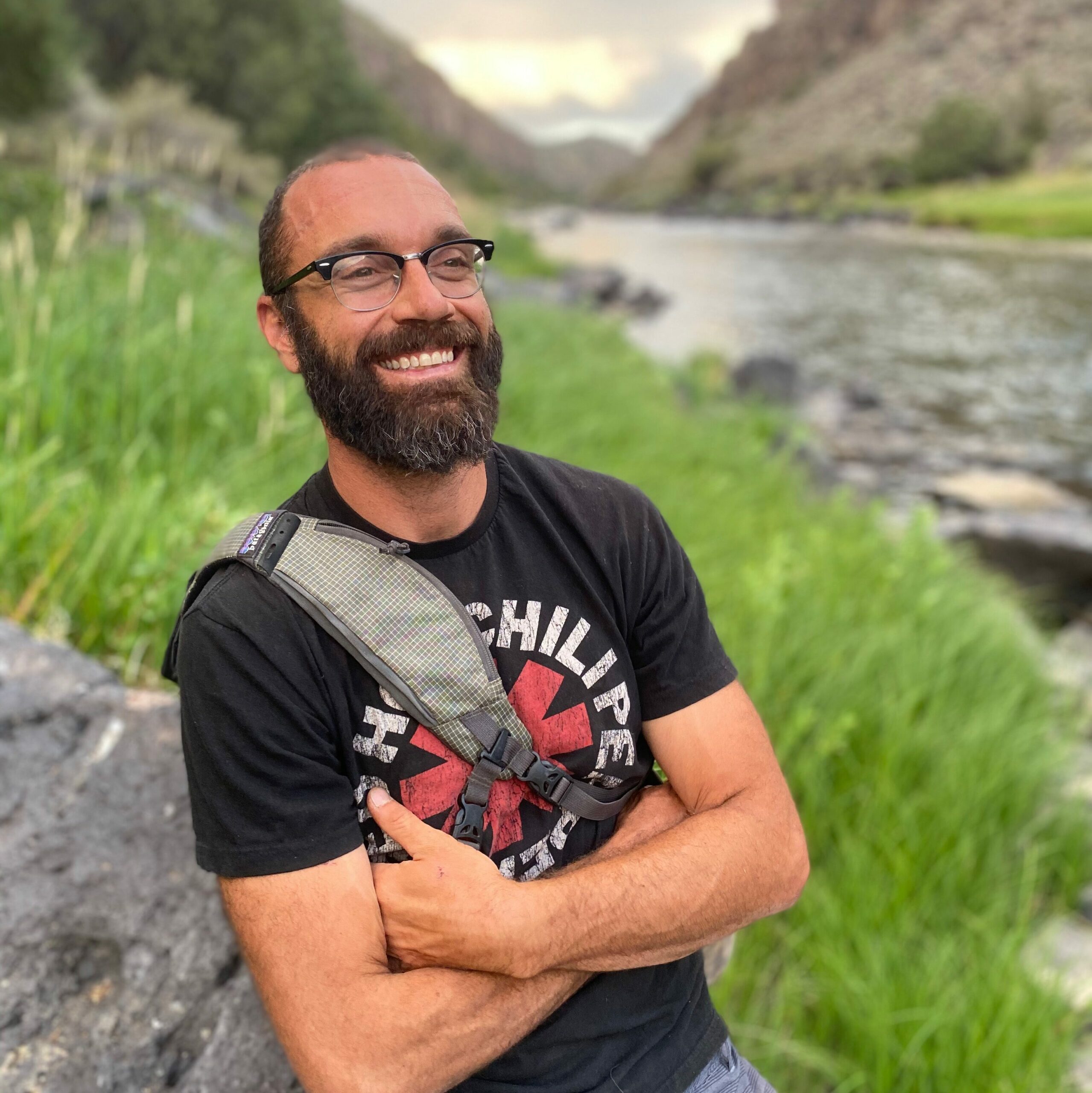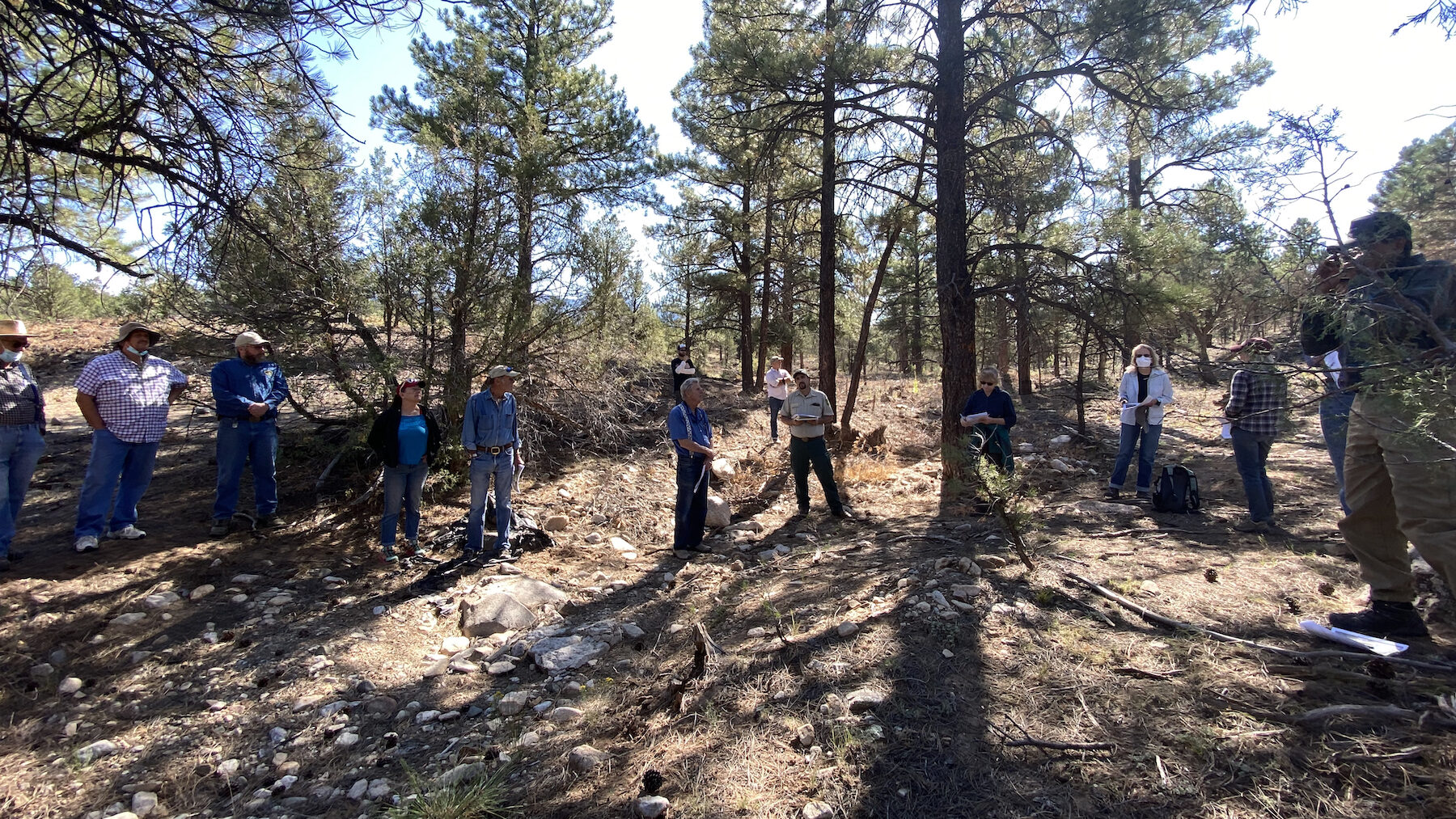As a part of the Western Collaborative Conservation Network’s Capacity Building Working Group, the Emerging Leaders Initiative works to support individuals by connecting them with mentors, one another, and resources that create career and professional development opportunities and empower change.
“Emerging leaders” are individuals new to the conservation field with an innovative vision for the future of conservation work and the motivation, passion, and collaborative mindset to work toward that vision. In this profile series, we’re featuring some of these emerging leaders to hear about their passions, the challenges they’ve faced entering the field of collaborative conservation, and their ideas for the future.
To find out more about the Emerging Leaders Initiative, contact Travis Anklam at travis.houle@umconnect.umt.edu.
J.R. Logan is not your typical emerging leader– hearing the term may conjure up the notion of a 20-something-year-old at the debut of their professional career. On the contrary, J.R. is in his late 30’s and has already experienced a fulfilling career as a journalist and free-lance writer. What makes J.R. an inspiring emerging leader in conservation is not his age. Rather, it is the unique perspectives and innovative ideas that he brings to the field with a passion to make sustainable environmental change in a place that he loves: the San Cristobal Valley of Taos, New Mexico.
—
For almost a decade, J.R. Logan immersed himself into the lives of the people around him as a journalist and freelance writer in Taos, New Mexico. J.R. told us that moving from Wyoming to Taos as a Staff Reporter for the local paper was an immersive crash-course into the funky, fun, complicated community. “Being a journalist gives you access into people’s lives in a way that the average person just does not get” he says.

Through his work, J.R. became familiar with the intricate complexities of the city– a diverse mix of peoples including Taos Pueblo and other Indigenous groups, the Hispano community of Northern New Mexico, young newcomers, and retired folks who had spent their whole lives in the area. “Through my work with Taos News, I recognized that all of the people, regardless of their background and history, had a connection to this place and landscape.”
The more J.R. spoke with Taos community members, the more he came to realize a chasm between the needs of his fellow community members and the ability of people with influence and money to wield power in a way that could address those needs. This uncomfortable recognition and a desire to do what he could for his community led J.R. to leave journalism. He found a position with a private foundation as a Program Officer. Once again, J.R. felt he was in a position that allowed him to access places normal people couldn’t. He learned about the intricate workings of agencies and nonprofits and the movement of money and power.
In 2018, after several years of working at the foundation, J.R. felt equipped to start a project of his own. He started an environmental consulting business which worked to bridge the gaps he had seen as a journalist. As a consultant, J.R. was able to address environmental conservation and ecological needs, as well as social, economic, and cultural-use needs by tapping into the resources that he knew existed.
He gathered ideas and collaborated with neighbors. One idea in particular started to take off. J.R. states, “Between the valleys of San Cristobal and Valdez is a big chunk of the Carson National Forest and like so much of the Carson, the exclusion of fire with overgrazing and typical forest management has created a tinderbox of fuels in what was otherwise a frequent, low-intensity fire forest. 75 to 80 percent of the county burns firewood as their primary source of heat. But the Carson National Forest hadn’t figured out a way to make it possible for folks like me and my neighbors to drive onto the hillside– an overstocked pine forest– and cut down the trees that need to come out to protect the forest, watersheds, and communities while also providing local people with firewood.”
This issue prompted J.R. and his neighbors to write a grant. They came up with an innovative form of self-organized community conservation which they called a ‘Forest Council’. And this was no new method of conservation; parts of the idea were borrowed by the way water and other resources had been shared within these valleys for centuries. “The system is premised on an overriding notion of sharing, equity, and the allocation of resources as fairly as possible, especially in times of drought or crisis. It’s a resilient system of managing water in a very arid landscape. So we took that structure from the Acequia System and applied it to the forest” says J.R.
The project received funding to thin 300 acres of the Carson National Forest which the council divided into one-acre blocks. Each interested community member was assigned a block and given the authority to thin that particular acre of forest for firewood. Afterwards, the Forest Council would pay the community member $300 for their labor and time, with the opportunity to cut more trees in the future.

J.R. says, “It sounds so simple. But the mere notion of the United States Forest Service (USFS) handing over control of a project to community members and trusting us to oversee the work of amateur woodcutters was a huge change. It showed the agency’s ability to collaborate with a partner organization that wanted to do things in the ways that benefit the community, not just the agency.”
But in reality, everyone wins! The USFS gets labor and manpower and forest treatments at very low cost. The forest ecosystem is healthier and more resilient from destructive wildfires. And, community members are able to access parts of the forest that they consider their birthright and heritage. “These hillsides aren’t just a forest that happens to be in their backyards, this is where they cut wood with their great grandparents and it’s where their ancestors settled and cut the building materials that are in the homes that they still live in. These are places where people have been raising livestock for generations… To be able to go back into the forests that they have a real kinship with, and do work that isn’t just beneficial to get firewood and a little bit of cash, but which has long-term ecological benefits to the watershed and ecosystem is an incredible source of pride!” reminds J.R.
Since 2018, when the program was started, 250 acres of Carson National Forest have been thinned by more than 150 individual community members who have collected over 1,000 cords* of wood. One of the most gratifying outcomes of the project for J.R. is that similar programs have cropped up all over the Taos area. J.R. adds that the Forest Council project has also helped mend relations between the community and the USFS which has historically been an antagonistic disunion of distrust and prejudice. “The project managed to acknowledge past issues while also realizing the benefits of collaboration, and this has resulted in a paradigm shift. The agency no longer stereotypes locals as trouble-makers and locals now believe that the agency can be a good, meaningful partner. And this has opened up opportunities to experiment with the partnership in new ways.”
*Note: One cord of wood is defined as 128 cubic feet (approximately 4′ high x 8′ long x 4′ deep).
Overall, J.R. asserts that you need trust to have a successful collaborative. He explains that “layers of colonialism– the Indigenous Tribes who were invaded and conquered by the Spanish, who in turn were invaded and conquered by the Americans– results in a place where the ecosystems are relatively fragile and everyone wants to use the land in a different way. Overcoming that history of conflict and the obvious vestiges of colonialism to help people become more open to constructive ideas for progress, is super challenging.”

Managing expectations is also crucial. J.R. admits that it is a constant balancing act of keeping people inspired and committed while also reminding them that complications of bureaucracy and constantly-changing landscapes may result in an outcome very different than planned.
As an Emerging Leader, the support that J.R. seeks are real-world examples of conservation successes: the how and why collaborative conservation projects have worked and their shortcomings, in order to repeat the strategies that led to success. “I’m not talking about relationships and meetings,” says J.R., “I’m talking about how to accomplish the work on the ground in a way that is collaborative and innovative– approaches that find loopholes in the system or work within the system to be effective. And we may not be able to replicate the program of another group, but hearing others’ experiences of innovative solutions and projects is a way to spark ideas of what may work in our geography.”
J.R. is completely aware that his humility, passion, empathy, and patience, in addition to his well-rounded experiences and background in journalism, have been major catalysts in his successful career change to conservation. He hopes that the conservation field will continue to put emphasis and priority on effective communication and he advises other emerging leaders to ‘set down roots’.
“Hopping from one job to another can be a real detriment– you gain a wide range of experiences but if you don’t set down roots and live a full life in a place that’s beyond your profession, you can’t gain peoples’ trust. People trust me because they see me at the post office and my kids go to school with their kids. Those are the things that actually build a sense of trust within a community and collaborative and it requires me to be accountable to those same people. I don’t get to just leave.”
And if it’s up to J.R., he won’t ever leave the San Cristobal watershed and the tiny creek that he lives on now. “I think this landscape could occupy all of my time, but more realistically, if I don’t have to leave Taos County professionally and I could focus the rest of my attention here, that would make me very happy. It would be great to spend the next couple of decades seeing programs and projects and ideas that we’ve cooked up now, through to fruition.”
—
Share your thoughts and engage in a conversation about this piece using our Western Collaborative Conservation Network listserv.

